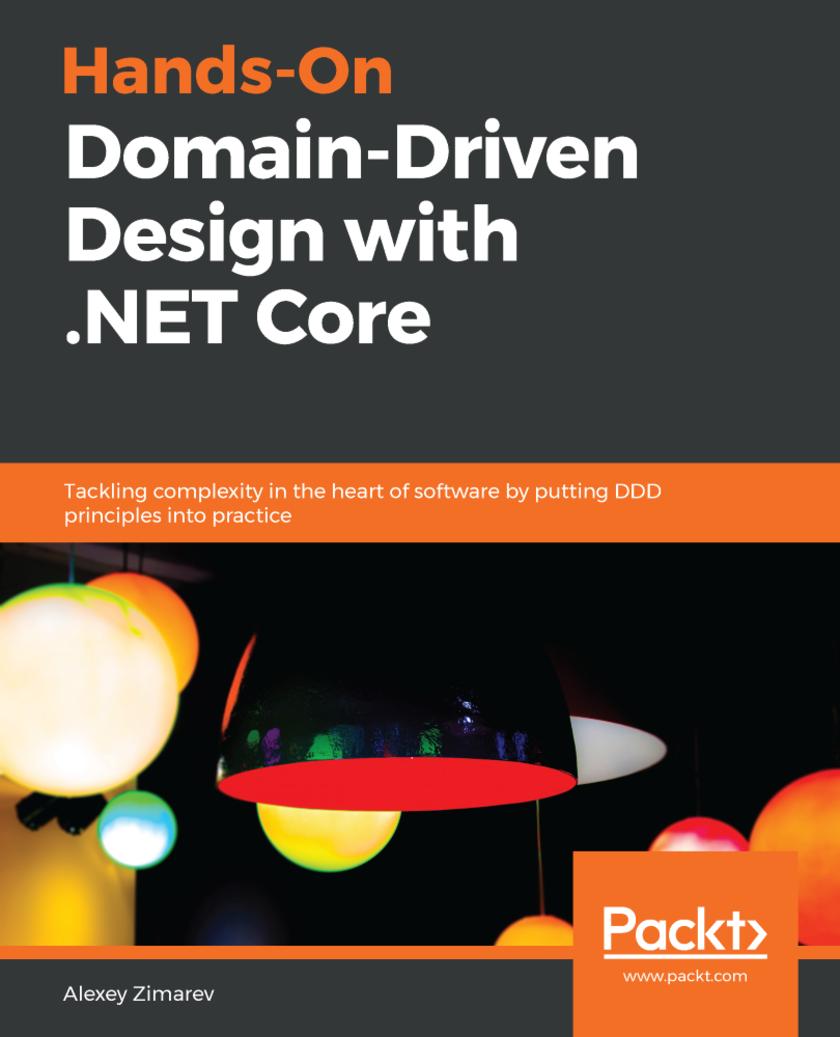
Hands-On Domain-Driven Design with .NET Core
¥70.84
Solve complex business problems by understanding users better, finding the right problem to solve, and building lean event-driven systems to give your customers what they really want Key Features * Apply DDD principles using modern tools such as EventStorming, Event Sourcing, and CQRS * Learn how DDD applies directly to various architectural styles such as REST, reactive systems, and microservices * Empower teams to work flexibly with improved services and decoupled interactions Book Description Developers across the world are rapidly adopting DDD principles to deliver powerful results when writing software that deals with complex business requirements. This book will guide you in involving business stakeholders when choosing the software you are planning to build for them. By figuring out the temporal nature of behavior-driven domain models, you will be able to build leaner, more agile, and modular systems. You’ll begin by uncovering domain complexity and learn how to capture the behavioral aspects of the domain language. You will then learn about EventStorming and advance to creating a new project in .NET Core 2.1; you’ll also and write some code to transfer your events from sticky notes to C#. The book will show you how to use aggregates to handle commands and produce events. As you progress, you’ll get to grips with Bounded Contexts, Context Map, Event Sourcing, and CQRS. After translating domain models into executable C# code, you will create a frontend for your application using Vue.js. In addition to this, you’ll learn how to refactor your code and cover event versioning and migration essentials. By the end of this DDD book, you will have gained the confidence to implement the DDD approach in your organization and be able to explore new techniques that complement what you’ve learned from the book. What you will learn * Discover and resolve domain complexity together with business stakeholders * Avoid common pitfalls when creating the domain model * Study the concept of Bounded Context and aggregate * Design and build temporal models based on behavior and not only data * Explore benefits and drawbacks of Event Sourcing * Get acquainted with CQRS and to-the-point read models with projections * Practice building one-way flow UI with Vue.js * Understand how a task-based UI conforms to DDD principles Who this book is for This book is for .NET developers who have an intermediate level understanding of C#, and for those who seek to deliver value, not just write code. Intermediate level of competence in JavaScript will be helpful to follow the UI chapters.
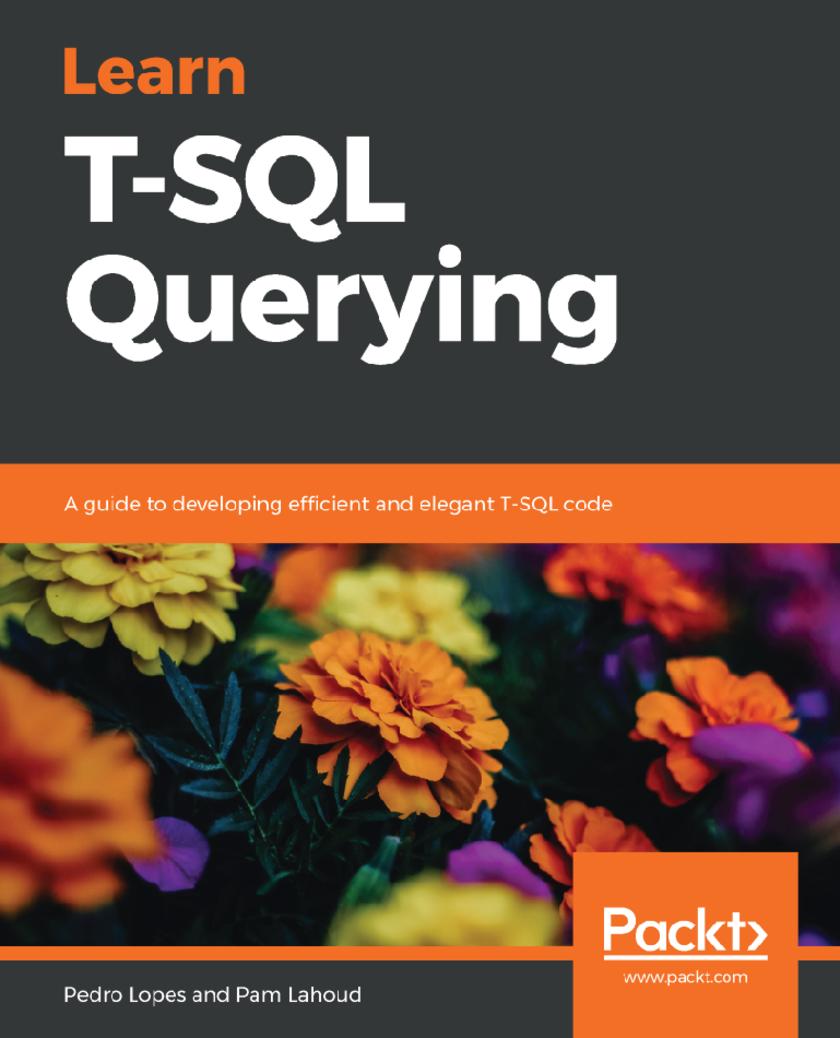
Learn T-SQL Querying
¥70.84
Troubleshoot query performance issues, identify anti-patterns in code, and write efficient T-SQL queries Key Features * Discover T-SQL functionalities and services that help you interact with relational databases * Understand the roles, tasks and responsibilities of a T-SQL developer * Explore solutions for carrying out database querying tasks, database administration, and troubleshooting Book Description Transact-SQL (T-SQL) is Microsoft's proprietary extension to the SQL language that is used with Microsoft SQL Server and Azure SQL Database. This book will be a useful guide to learning the art of writing efficient T-SQL code in modern SQL Server versions, as well as the Azure SQL Database. The book will get you started with query processing fundamentals to help you write powerful, performant T-SQL queries. You will then focus on query execution plans and learn how to leverage them for troubleshooting. In the later chapters, you will learn how to identify various T-SQL patterns and anti-patterns. This will help you analyze execution plans to gain insights into current performance, and determine whether or not a query is scalable. You will also learn to build diagnostic queries using dynamic management views (DMVs) and dynamic management functions (DMFs) to address various challenges in T-SQL execution. Next, you will study how to leverage the built-in tools of SQL Server to shorten the time taken to address query performance and scalability issues. In the concluding chapters, the book will guide you through implementing various features, such as Extended Events, Query Store, and Query Tuning Assistant using hands-on examples. By the end of this book, you will have the skills to determine query performance bottlenecks, avoid pitfalls, and discover the anti-patterns in use. Foreword by Conor Cunningham, Partner Architect – SQL Server and Azure SQL – Microsoft What you will learn * Use Query Store to understand and easily change query performance * Recognize and eliminate bottlenecks that lead to slow performance * Deploy quick fixes and long-term solutions to improve query performance * Implement best practices to minimize performance risk using T-SQL * Achieve optimal performance by ensuring careful query and index design * Use the latest performance optimization features in SQL Server 2017 and SQL Server 2019 * Protect query performance during upgrades to newer versions of SQL Server Who this book is for This book is for database administrators, database developers, data analysts, data scientists, and T-SQL practitioners who want to get started with writing T-SQL code and troubleshooting query performance issues, through the help of practical examples. Previous knowledge of T-SQL querying is not required to get started on this book.
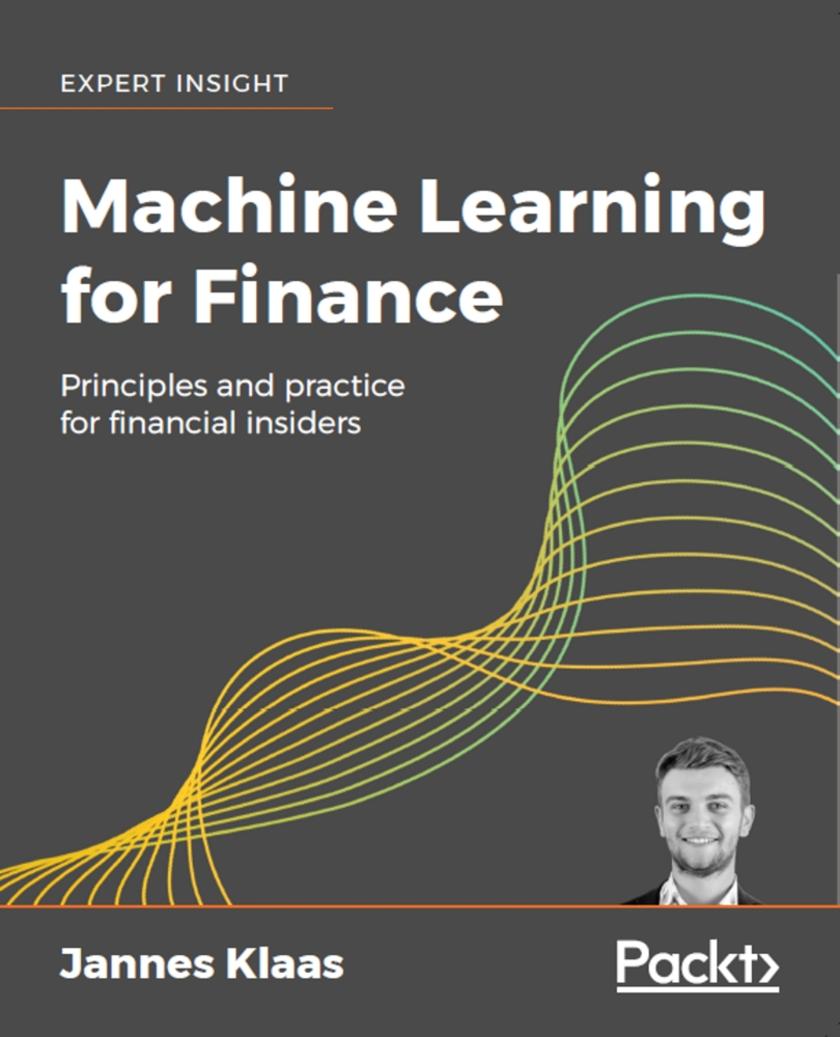
Machine Learning for Finance
¥70.84
Plan and build useful machine learning systems for financial services, with full working Python code Key Features * Build machine learning systems that will be useful across the financial services industry * Discover how machine learning can solve finance industry challenges * Gain the machine learning insights and skills fintech companies value most Book Description Machine learning skills are essential for anybody working in financial data analysis. Machine Learning for Finance shows you how to build machine learning models for use in financial services organizations. It shows you how to work with all the key machine learning models, from simple regression to advanced neural networks. You will see how to use machine learning to automate manual tasks, identify and address systemic bias, and find new insights and patterns hidden in available data. Machine Learning for Finance encourages and equips you to find new ways to use data to serve an organization’s business goals. Broad in scope yet deeply practical in approach, Machine Learning for Finance will help you to apply machine learning in all parts of a financial organization’s infrastructure. If you work or plan to work in fintech, and want to gain one of the most valuable skills in the sector today, this book is for you. What you will learn * Practical machine learning for the finance sector * Build machine learning systems that support the goals of financial organizations * Think creatively about problems and how machine learning can solve them * Identify and reduce sources of bias from machine learning models * Apply machine learning to structured data, natural language, photographs, and written text related to finance * Use machine learning to detect fraud, forecast financial trends, analyze customer sentiments, and more * Implement heuristic baselines, time series, generative models, and reinforcement learning in Python, scikit-learn, Keras, and TensorFlow Who this book is for Machine Learning for Finance is for financial professionals who want to develop and apply machine learning skills, and for students entering the field. You should be comfortable with Python and the basic data science stack, such as NumPy, pandas, and Matplotlib, to get the most out of this book.
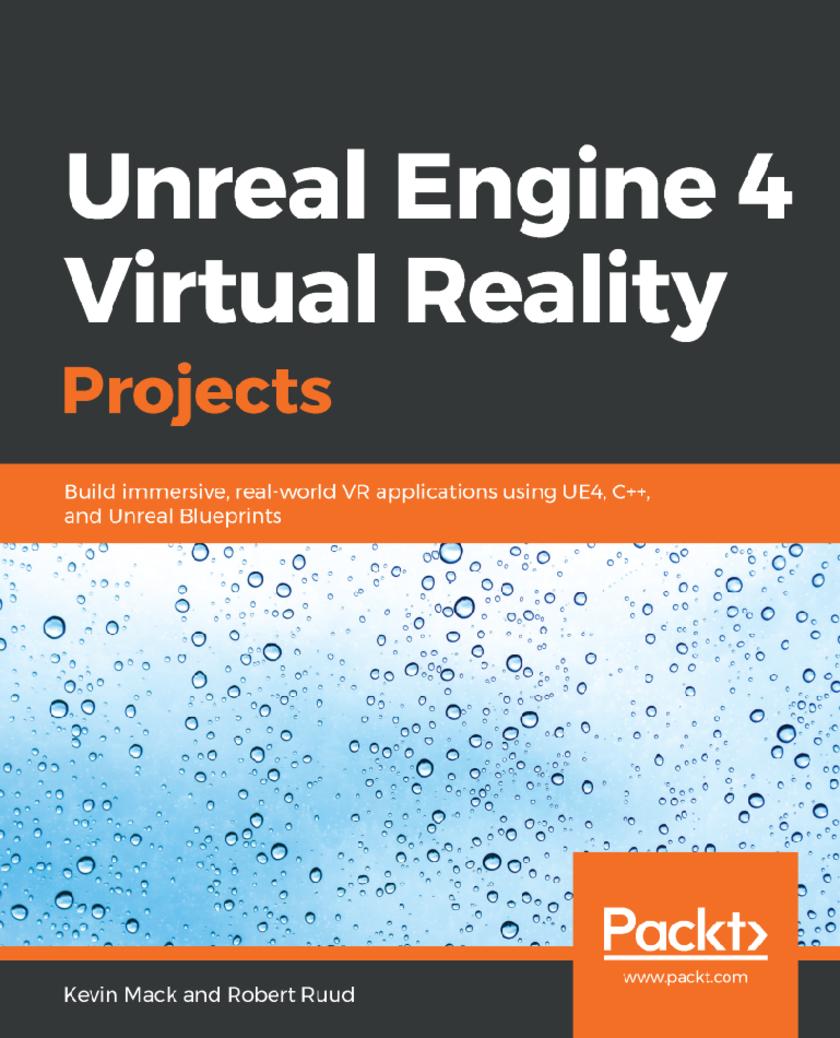
Unreal Engine 4 Virtual Reality Projects
¥70.84
Learn to design and build Virtual Reality experiences, applications, and games in Unreal Engine 4 through a series of practical, hands-on projects that teach you to create controllable avatars, user interfaces, and more. Key Features * Deploy your virtual reality applications on the latest Oculus Go and Samsung Gear * Build real-world applications such as 3D UIs, mini games, and 360° media player applications using Unreal Engine 4 * Master multiplayer networking and build rich multi-user VR experiences Book Description Unreal Engine 4 (UE4) is a powerful tool for developing VR games and applications. With its visual scripting language, Blueprint, and built-in support for all major VR headsets, it's a perfect tool for designers, artists, and engineers to realize their visions in VR. This book will guide you step-by-step through a series of projects that teach essential concepts and techniques for VR development in UE4. You will begin by learning how to think about (and design for) VR and then proceed to set up a development environment. A series of practical projects follows, taking you through essential VR concepts. Through these exercises, you'll learn how to set up UE4 projects that run effectively in VR, how to build player locomotion schemes, and how to use hand controllers to interact with the world. You'll then move on to create user interfaces in 3D space, use the editor's VR mode to build environments directly in VR, and profile/optimize worlds you've built. Finally, you'll explore more advanced topics, such as displaying stereo media in VR, networking in Unreal, and using plugins to extend the engine. Throughout, this book focuses on creating a deeper understanding of why the relevant tools and techniques work as they do, so you can use the techniques and concepts learned here as a springboard for further learning and exploration in VR. What you will learn * Understand design principles and concepts for building VR applications * Set up your development environment with Unreal Blueprints and C++ * Create a player character with several locomotion schemes * Evaluate and solve performance problems in VR to maintain high frame rates * Display mono and stereo videos in VR * Extend Unreal Engine's capabilities using various plugins Who this book is for This book is for anyone interested in learning to develop Virtual Reality games and applications using UE4. Developers new to UE4 will benefit from hands-on projects that guide readers through clearly-explained steps, while both new and experienced developers will learn crucial principles and techniques for VR development in UE4.
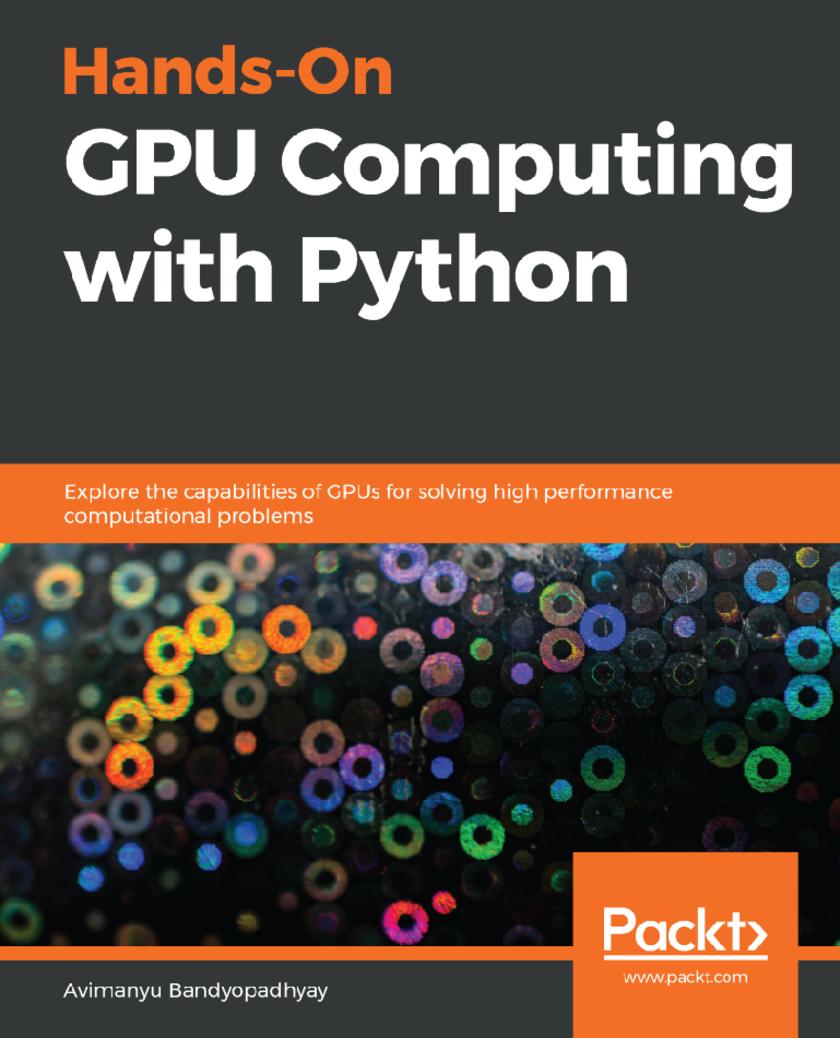
Hands-On GPU Computing with Python
¥70.84
Explore GPU-enabled programmable environment for machine learning, scientific applications, and gaming using PuCUDA, PyOpenGL, and Anaconda Accelerate Key Features * Understand effective synchronization strategies for faster processing using GPUs * Write parallel processing scripts with PyCuda and PyOpenCL * Learn to use the CUDA libraries like CuDNN for deep learning on GPUs Book Description GPUs are proving to be excellent general purpose-parallel computing solutions for high performance tasks such as deep learning and scientific computing. This book will be your guide to getting started with GPU computing. It will start with introducing GPU computing and explain the architecture and programming models for GPUs. You will learn, by example, how to perform GPU programming with Python, and you’ll look at using integrations such as PyCUDA, PyOpenCL, CuPy and Numba with Anaconda for various tasks such as machine learning and data mining. Going further, you will get to grips with GPU work flows, management, and deployment using modern containerization solutions. Toward the end of the book, you will get familiar with the principles of distributed computing for training machine learning models and enhancing efficiency and performance. By the end of this book, you will be able to set up a GPU ecosystem for running complex applications and data models that demand great processing capabilities, and be able to efficiently manage memory to compute your application effectively and quickly. What you will learn * Utilize Python libraries and frameworks for GPU acceleration * Set up a GPU-enabled programmable machine learning environment on your system with Anaconda * Deploy your machine learning system on cloud containers with illustrated examples * Explore PyCUDA and PyOpenCL and compare them with platforms such as CUDA, OpenCL and ROCm. * Perform data mining tasks with machine learning models on GPUs * Extend your knowledge of GPU computing in scientific applications Who this book is for Data Scientist, Machine Learning enthusiasts and professionals who wants to get started with GPU computation and perform the complex tasks with low-latency. Intermediate knowledge of Python programming is assumed.
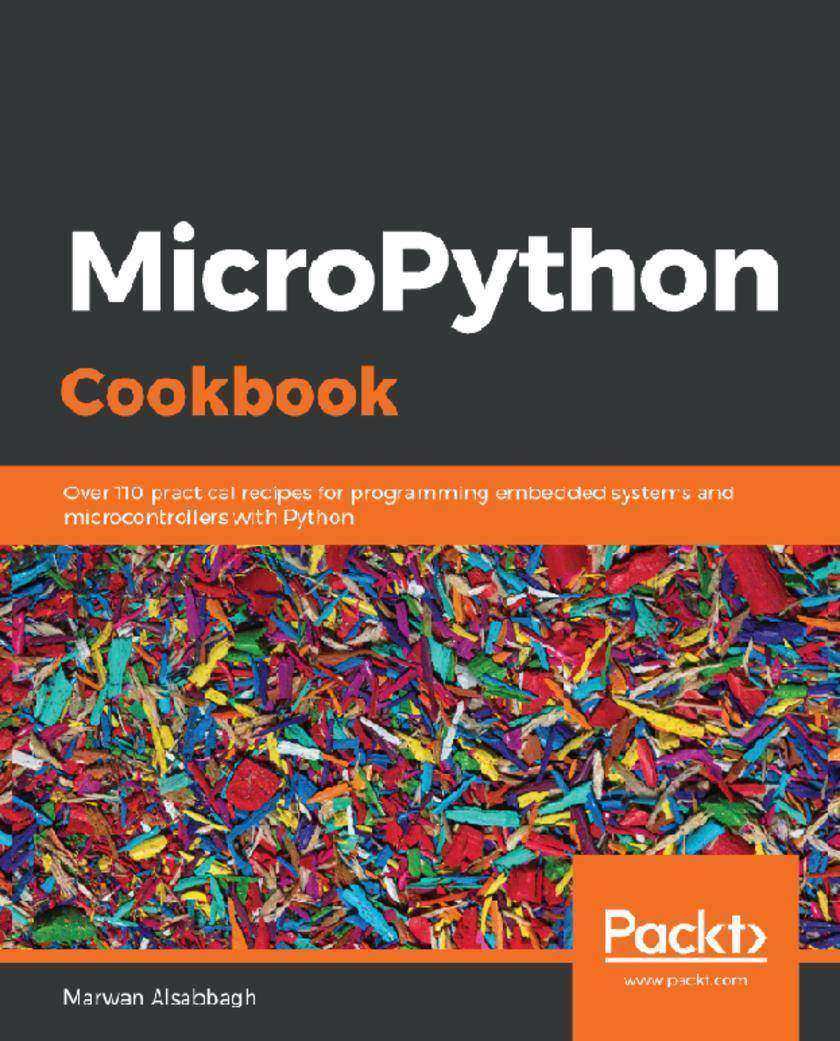
MicroPython Cookbook
¥70.84
Learn how you can control LEDs, make music, and read sensor data using popular microcontrollers such as Adafruit Circuit Playground, ESP8266, and the BBC micro:bit Key Features * Load and execute your first program with MicroPython * Program an IoT device to retrieve weather data using a RESTful API * Get to grips with integrating hardware, programming, and networking concepts with MicroPython Book Description MicroPython is an open source implementation of Python 3 that runs in embedded environments. With MicroPython, you can write clean and simple Python code to control hardware instead of using complex low-level languages like C and C++. This book guides you through all the major applications of the MicroPython platform to build and program projects that use microcontrollers. The MicroPython book covers recipes that’ll help you experiment with the programming environment and hardware programmed in MicroPython. You’ll find tips and techniques for building a variety of objects and prototypes that can sense and respond to touch, sound, position, heat, and light. This book will take you through the uses of MicroPython with a variety of popular input devices and sensors. You’ll learn techniques for handling time delays and sensor readings, and apply advanced coding techniques to create complex projects. As you advance, you’ll get to deal with Internet of Things (IoT) devices and integration with other online web services. Furthermore, you'll also use MicroPython to make music with bananas and create portable multiplayer video games that incorporate sound and light animations into the game play. By the end of the book, you'll have mastered tips and tricks to troubleshoot your development problems and push your MicroPython project to the next level! What you will learn * Execute code without any need for compiling or uploading using REPL (read-evaluate-print-loop) * Program and control LED matrix and NeoPixel drivers to display patterns and colors * Build projects that make use of light, temperature, and touch sensors * Configure devices to create Wi-Fi access points and use network modules to scan and connect to existing networks * Use Pulse Width Modulation to control DC motors and servos * Build an IoT device to display live weather data from the Internet at the touch of a button Who this book is for If you want to build and program projects that use microcontrollers, this book will offer you dozens of recipes to guide you through all the major applications of the MicroPython platform. Although no knowledge of MicroPython or microcontrollers is expected, a general understanding of Python is necessary to get started with this book.
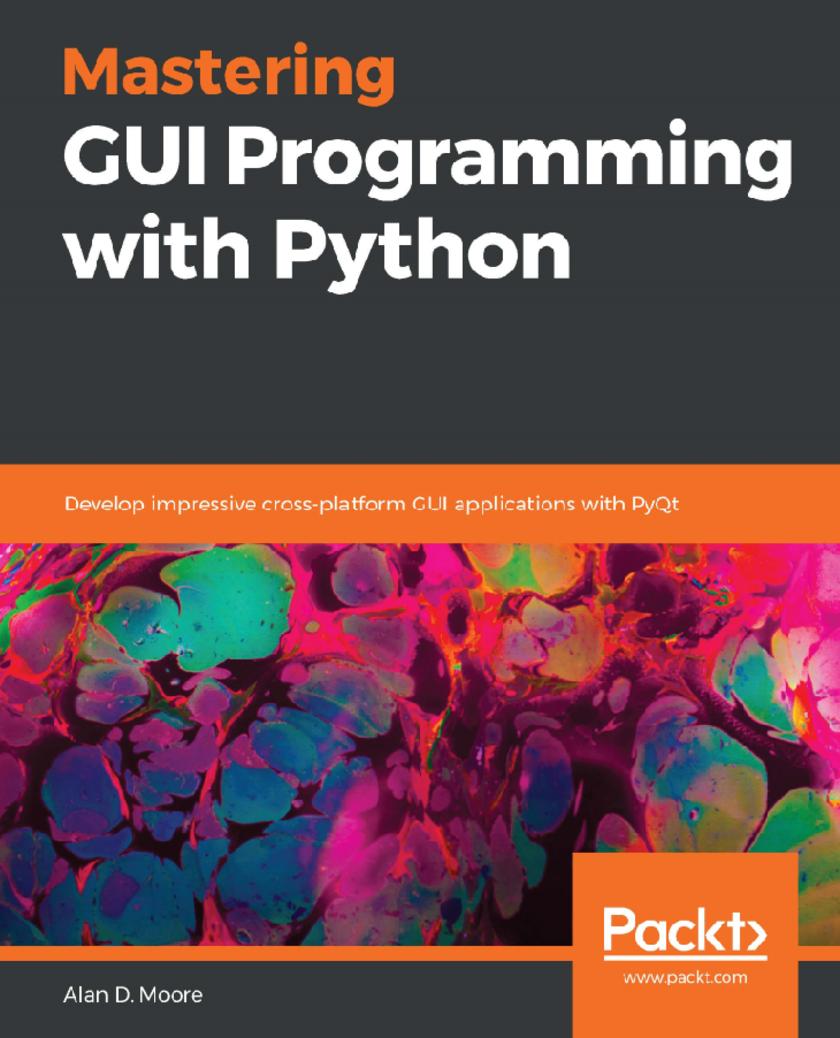
Mastering GUI Programming with Python
¥70.84
An advanced guide to creating powerful high-performance GUIs for modern, media-rich applications in various domains such as business and game development Key Features * Gain comprehensive knowledge of Python GUI development using PyQt 5.12 * Explore advanced topics including multithreaded programming, 3D animation, and SQL databases * Build cross-platform GUIs for Windows, macOS, Linux, and Raspberry Pi Book Description PyQt5 has long been the most powerful and comprehensive GUI framework available for Python, yet there is a lack of cohesive resources available to teach Python programmers how to use it. This book aims to remedy the problem by providing comprehensive coverage of GUI development with PyQt5. You will get started with an introduction to PyQt5, before going on to develop stunning GUIs with modern features. You will then learn how to build forms using QWidgets and learn about important aspects of GUI development such as layouts, size policies, and event-driven programming. Moving ahead, you’ll discover PyQt5’s most powerful features through chapters on audio-visual programming with QtMultimedia, database-driven software with QtSQL, and web browsing with QtWebEngine. Next, in-depth coverage of multithreading and asynchronous programming will help you run tasks asynchronously and build high-concurrency processes with ease. In later chapters, you’ll gain insights into QOpenGLWidget, along with mastering techniques for creating 2D graphics with QPainter. You’ll also explore PyQt on a Raspberry Pi and interface it with remote systems using QtNetwork. Finally, you will learn how to distribute your applications using setuptools and PyInstaller. By the end of this book, you will have the skills you need to develop robust GUI applications using PyQt. What you will learn * Get to grips with the inner workings of PyQt5 * Learn how elements in a GUI application communicate with signals and slots * Learn techniques for styling an application * Explore database-driven applications with the QtSQL module * Create 2D graphics with QPainter * Delve into 3D graphics with QOpenGLWidget * Build network and web-aware applications with QtNetwork and QtWebEngine Who this book is for This book is for programmers who want to create attractive, functional, and powerful GUIs using the Python language. You’ll also find this book useful if you are a student, professional, or anyone who wants to start exploring GUIs or take your skills to the next level. Although prior knowledge of the Python language is assumed, experience with PyQt, Qt, or GUI programming is not required.
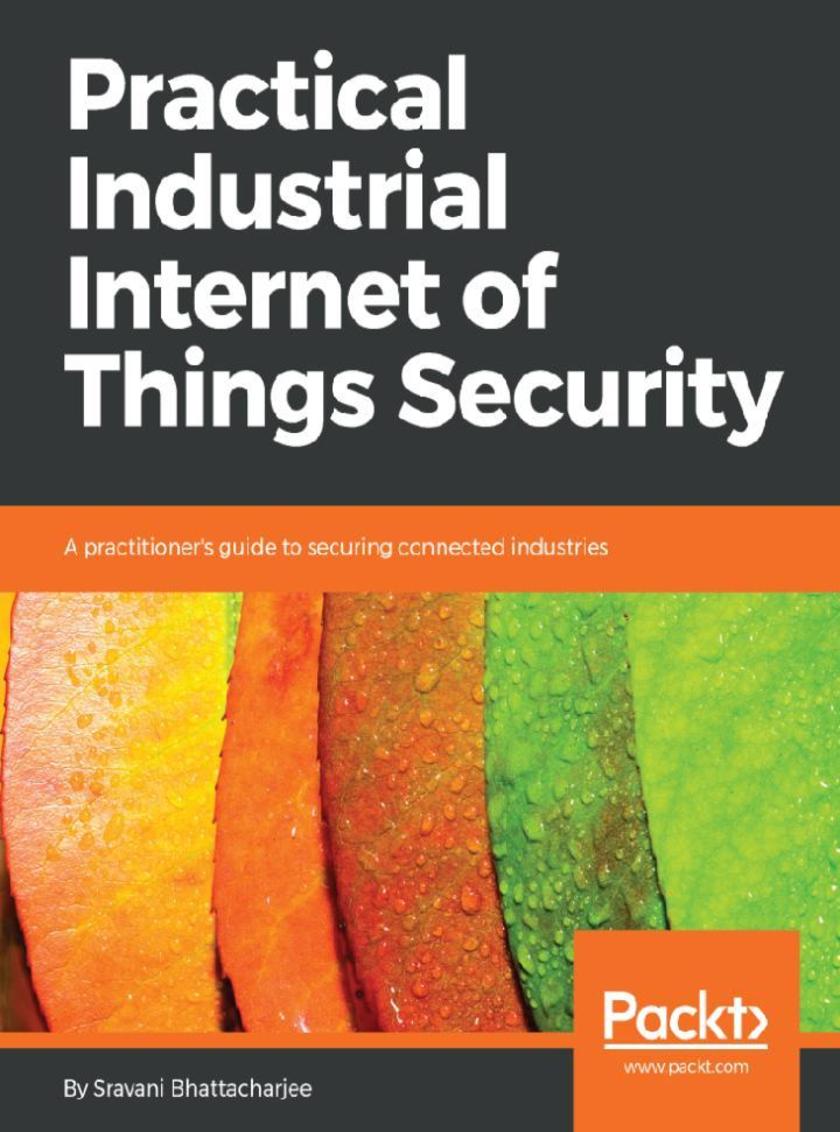
Practical Industrial Internet of Things Security
¥69.75
Over 60 recipes to help you design interactive, smart, and cross-platform GUI applications Key Features * Get succinct QT solutions to pressing GUI programming problems in Python * Learn how to effectively implement reactive programming * Build customized applications that are robust and reliable Book Description PyQt is one of the best cross-platform interface toolkits currently available; it's stable, mature, and completely native. If you want control over all aspects of UI elements, PyQt is what you need. This book will guide you through every concept necessary to create fully functional GUI applications using PyQt, with only a few lines of code. As you expand your GUI using more widgets, you will cover networks, databases, and graphical libraries that greatly enhance its functionality. Next, the book guides you in using Qt Designer to design user interfaces and implementing and testing dialogs, events, the clipboard, and drag and drop functionality to customize your GUI. You will learn a variety of topics, such as look and feel customization, GUI animation, graphics rendering, implementing Google Maps, and more. Lastly, the book takes you through how Qt5 can help you to create cross-platform apps that are compatible with Android and iOS. You will be able to develop functional and appealing software using PyQt through interesting and fun recipes that will expand your knowledge of GUIs What you will learn * Use basic Qt components, such as a radio button, combo box, and sliders * Use QSpinBox and sliders to handle different signals generated on mouse clicks * Work with different Qt layouts to meet user interface requirements * Create custom widgets and set up customizations in your GUI * Perform asynchronous I/O operations and thread handling in the Python GUI * Employ network concepts, internet browsing, and Google Maps in UI * Use graphics rendering and implement animation in your GUI * Make your GUI application compatible with Android and iOS devices Who this book is for If you’re an intermediate Python programmer wishing to enhance your coding skills by writing powerful GUIs in Python using PyQT, this is the book for you.
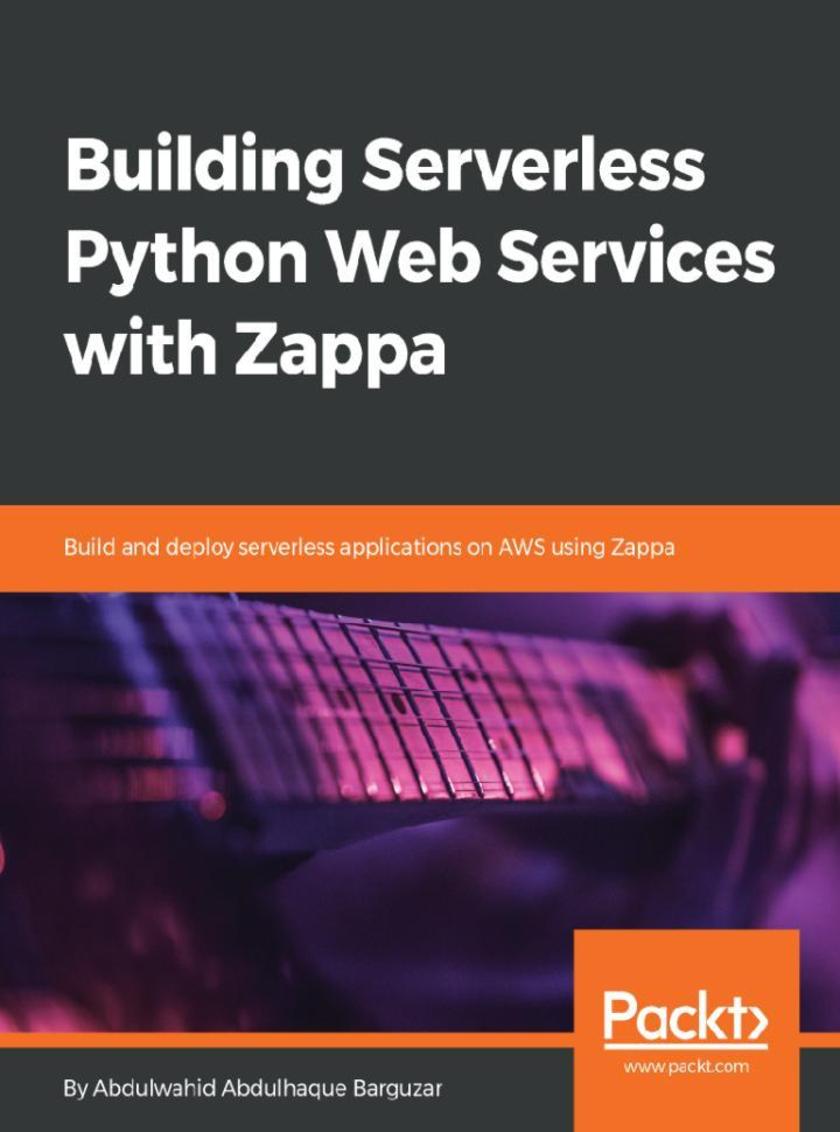
Building Serverless Python Web Services with Zappa
¥69.75
Master serverless architectures in Python and their implementation, with Zappa on three different frameworks. Key Features * Scalable serverless Python web services using Django, Flask, and Pyramid. * Learn Asynchronous task execution on AWS Lambda and scheduling using Zappa. * Implementing Zappa in a Docker container. Book Description Serverless applications are becoming very popular these days, not just because they save developers the trouble of managing the servers, but also because they provide several other benefits such as cutting heavy costs and improving the overall performance of the application. This book will help you build serverless applications in a quick and efficient way. We begin with an introduction to AWS and the API gateway, the environment for serverless development, and Zappa. We then look at building, testing, and deploying apps in AWS with three different frameworks--Flask, Django, and Pyramid. Setting up a custom domain along with SSL certificates and configuring them with Zappa is also covered. A few advanced Zappa settings are also covered along with securing Zappa with AWS VPC. By the end of the book you will have mastered using three frameworks to build robust and cost-efficient serverless apps in Python. What you will learn *Build, test, and deploy a simple web service using AWS CLI *Integrate Flask-based Python applications, via AWS CLI configuration *Design Rest APIs integrated with Zappa for Flask and Django *Create a project in the Pyramid framework and configure it with Zappa *Generate SSL Certificates using Amazon Certificate Manager *Configure custom domains with AWS Route 53 *Create a Docker container similar to AWS Lambda Who this book is for Python Developers who are interested in learning how to develop fast and highly scalable serverless applications in Python, will find this book useful
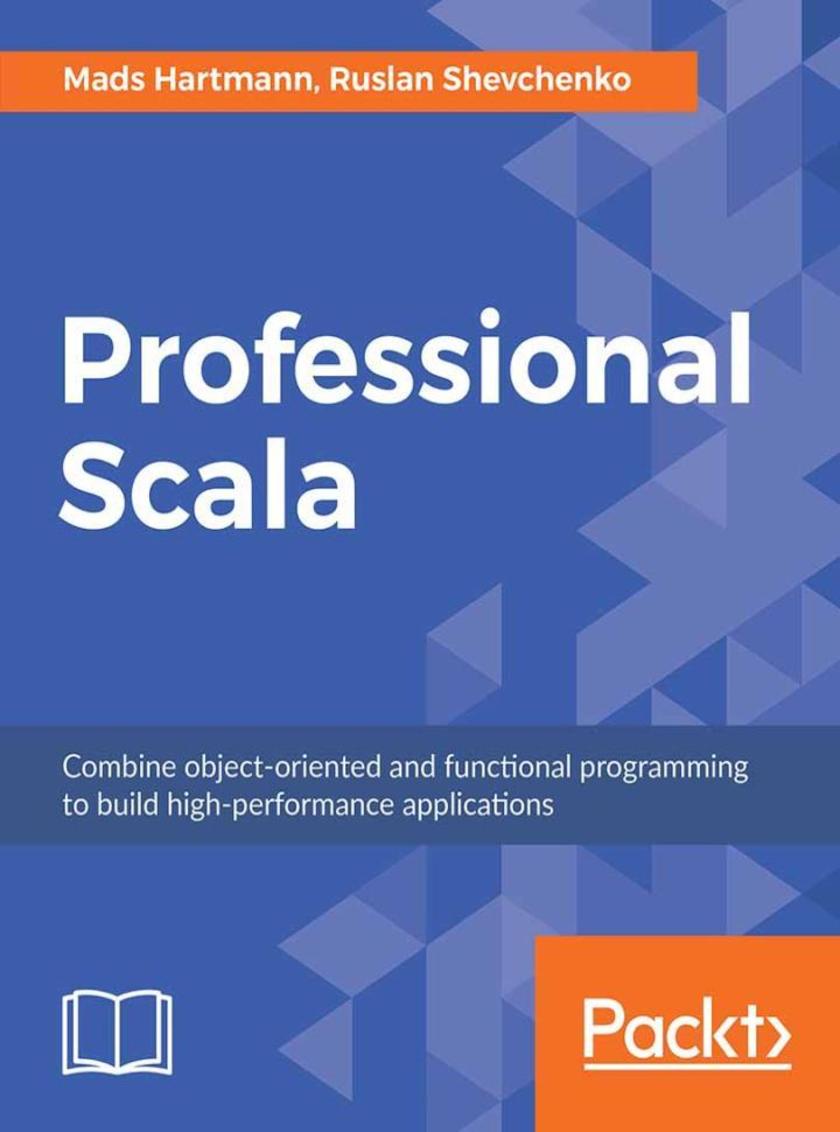
Professional Scala
¥69.75
Build smart applications by implementing real-world artificial intelligence projects Key Features *Explore a variety of AI projects with Python *Get well-versed with different types of neural networks and popular deep learning algorithms *Leverage popular Python deep learning libraries for your AI projects Book Description Artificial Intelligence (AI) is the newest technology that’s being employed among varied businesses, industries, and sectors. Python Artificial Intelligence Projects for Beginners demonstrates AI projects in Python, covering modern techniques that make up the world of Artificial Intelligence. This book begins with helping you to build your first prediction model using the popular Python library, scikit-learn. You will understand how to build a classifier using an effective machine learning technique, random forest, and decision trees. With exciting projects on predicting bird species, analyzing student performance data, song genre identification, and spam detection, you will learn the fundamentals and various algorithms and techniques that foster the development of these smart applications. In the concluding chapters, you will also understand deep learning and neural network mechanisms through these projects with the help of the Keras library. By the end of this book, you will be confident in building your own AI projects with Python and be ready to take on more advanced projects as you progress What you will learn *Build a prediction model using decision trees and random forest *Use neural networks, decision trees, and random forests for classification *Detect YouTube comment spam with a bag-of-words and random forests *Identify handwritten mathematical symbols with convolutional neural networks *Revise the bird species identifier to use images *Learn to detect positive and negative sentiment in user reviews Who this book is for Python Artificial Intelligence Projects for Beginners is for Python developers who want to take their first step into the world of Artificial Intelligence using easy-to-follow projects. Basic working knowledge of Python programming is expected so that you’re able to play around with code
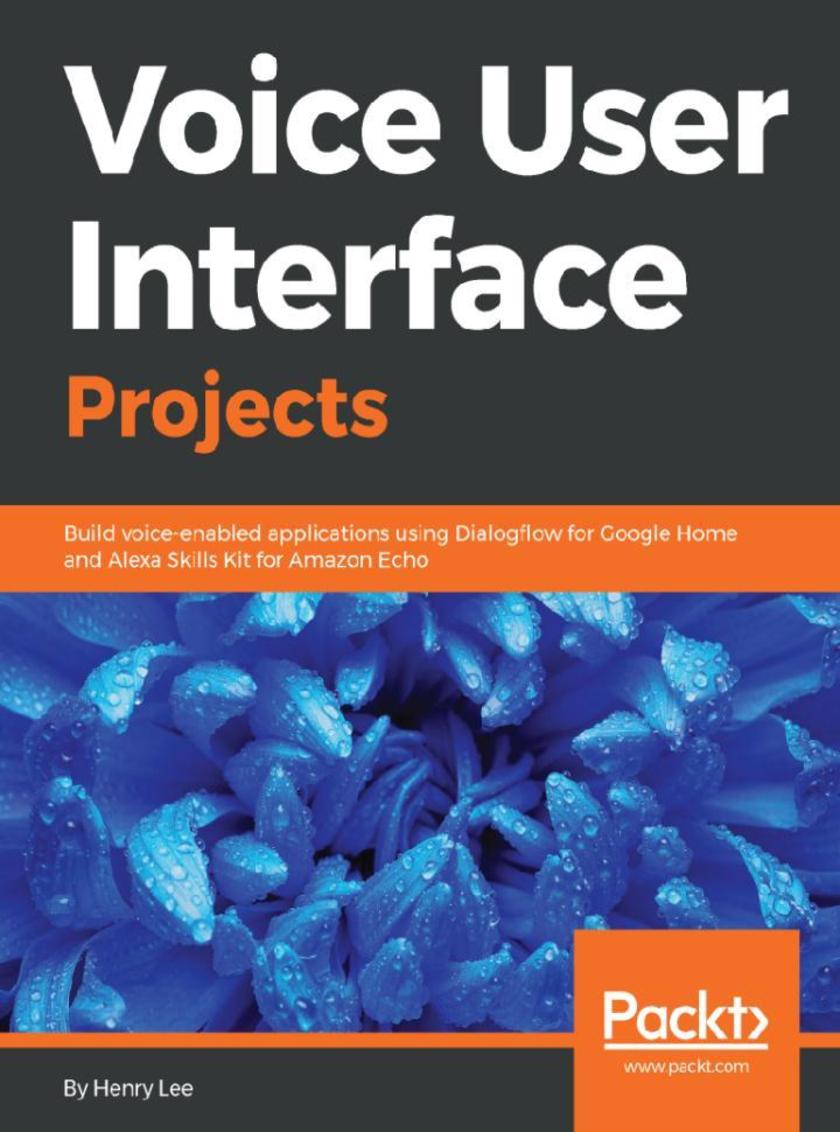
Voice User Interface Projects
¥69.75
Build optimized applications in Kotlin by learning how to make use of the standard library features the smart way Key Features *Get the most out of the Kotlin library to develop high-quality portable applications *Explore the powerful support for data processing and I/O operations *Discover ways to enhance your Android application development Book Description Given the verbosity of Java, developers have turned to Kotlin for effective software development. The Kotlin standard library provides vital tools that make day-to-day Kotlin programming easier. This library features the core attributes of the language, such as algorithmic problems, design patterns, data processing, and working with files and data streams. The recipes in this book offer coding solutions that can be readily executed. The book covers various topics related to data processing, I/O operations, and collections transformation. We'll walk through effective design patterns in Kotlin and you'll understand how coroutines add new features to JavaScript. As you make your way through the chapters, you'll learn how to implement clean, reusable functions and scalable interfaces containing default implementations. In the concluding chapters, we'll provide recipes on functional programming concepts, such as lambdas, monads, functors, and Kotlin scoping functions. By the end of the book, you'll be able to address a range of problems that Kotlin developers face by implementing easy-to-follow solutions. What you will learn *Work with ranges, progressions, and sequences in use cases *Add new functionalities to current classes with Kotlin extensions *Understand elements such as lambdas, closures, and monads *Build a REST API consumer with Retrofit and a coroutine adapter *Discover useful tips and solutions for making your Android projects *Explore the benefits of standard library features Who this book is for This book is for software developers who are familiar with Kotlin’s basics and want to discover more advanced features and concepts, especially those provided by the Kotlin standard library. It’s also ideal for experienced software developers who are familiar with the functional programming paradigm and other programming languages who want to switch to Kotlin. It will also help Java developers switch to Kotlin and integrate it into existing Java Virtual Machine (JVM) projects.
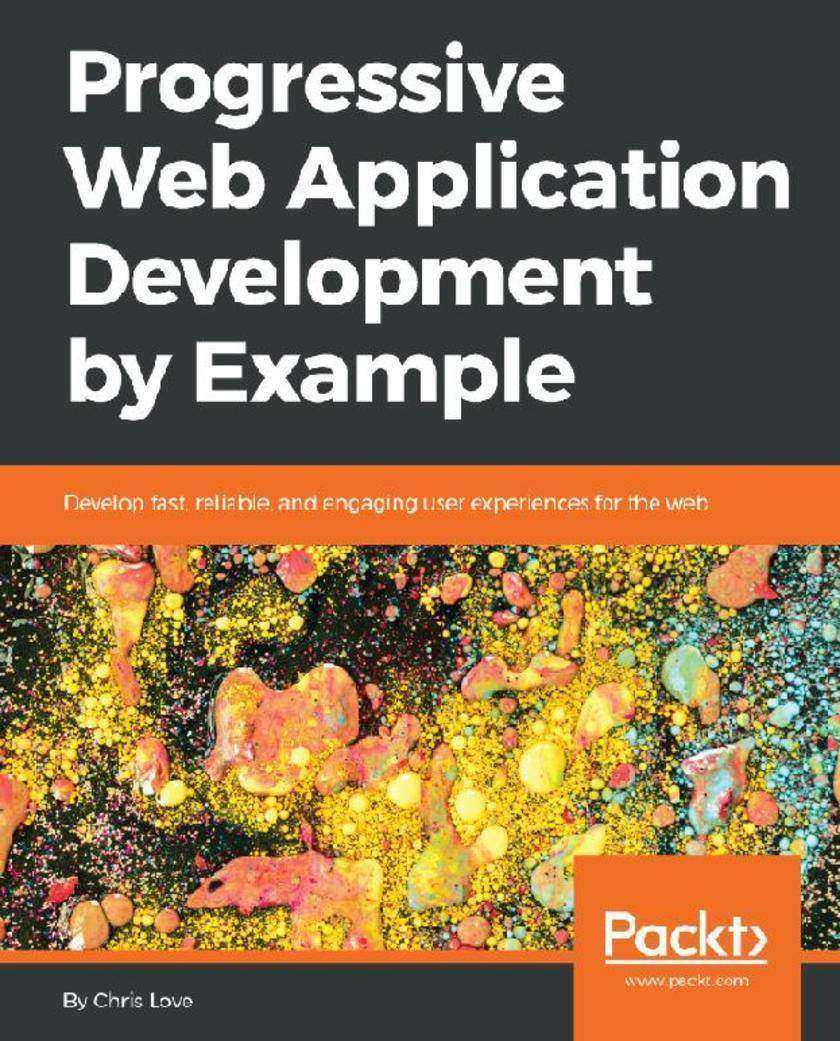
Progressive Web Application Development by Example
¥69.75
Leverage the full potential of the web to make your web sites better than native applications for every platform. Key Features *Explore different models and patterns required to develop progressive web applications *Create applications requiring shorter runtime for attracting more users *Study different projects to understand the fundamentals of progressive web applications Book Description Are you a developer that wants to create truly cross-platform user experiences with a minimal footprint, free of store restrictions and features customers want? Then you need to get to grips with Progressive Web Applications (PWAs), a perfect amalgamation of web and mobile applications with a blazing-fast response time. Progressive Web Application Development by Example helps you explore concepts of the PWA development by enabling you to develop three projects, starting with a 2048 game. In this game, you will review parts of a web manifest file and understand how a browser uses properties to define the home screen experience. You will then move on to learning how to develop and use a podcast client and be introduced to service workers. The application will demonstrate how service workers are registered and updated. In addition to this, you will review a caching API so that you have a firm understanding of how to use the cache within a service worker, and you'll discover core caching strategies and how to code them within a service worker. Finally, you will study how to build a tickets application, wherein you’ll apply advanced service worker techniques, such as cache invalidation. Also, you'll learn about tools you can use to validate your applications and scaffold them for quality and consistency. By the end of the book, you will have walked through browser developer tools, node modules, and online tools for creating high-quality PWAs. What you will learn *Explore the core principles of PWAs *Study the three main technical requirements of PWAs *Discover enhancing requirements to make PWAs transcend native apps and traditional websites *Create and install PWAs on common websites with a given HTTPS as the core requirement *Get acquainted with the service worker life cycle *Define service worker caching patterns *Apply caching strategies to three different website scenarios *Implement best practices for web performance Who this book is for Progressive Web Application Development by Example is for you if you’re a web developer or front-end designer who wants to ensure improved user experiences. If you are an application developer with knowledge of HTML, CSS, and JavaScript, this book will help you enhance your skills in order to develop progressive web applications, the future of app development.
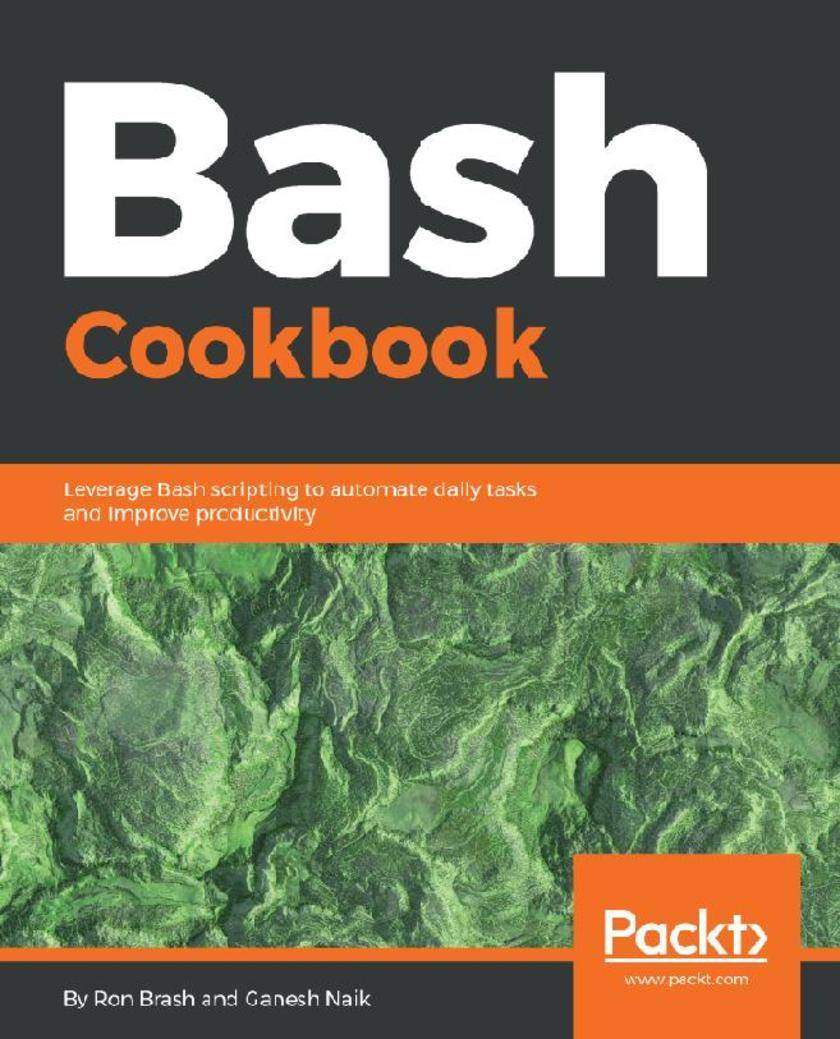
Bash Cookbook
¥69.75
Learn all the fundamentals of PHP with a book that blends theory with practice to build up the skills you need for modern web development. Key Features *Brush up on basic PHP 7 syntax and work with variables, data types, arrays, and loops *Master advanced concepts like building your own frameworks and creating your own applications *Apply your newly learned PHP skills to a variety of real-life business scenarios Book Description PHP is the preferred server-side scripting language for tech giants such as Facebook, Wikipedia, and Tumblr despite full-stack JavaScript gaining popularity with upcoming developers. This is because PHP performs better when dealing with heavy computations on the back end. In this book, you’ll learn everything you need to get up and running with the latest version of PHP, including package management with tools such as composer, secure database operations, and a whole host of other best practices that will help you stay a step ahead of traditional programmers. What you will learn *Understand the fundamentals of PHP and work with classes and inheritance *Learn about database operations and package management with composer *Tackle common security concerns and pitfalls using authentication and validation *Build effective PHP applications and frameworks for your business needs Who this book is for If you’re already familiar with another programming language and want to learn about the fundamentals of PHP programming, you’ll find the flow of this book to be an ideal fit. Having a prior understanding of HTML, MySQL, CSS, and JavaScript will be beneficial, but is not mandatory.
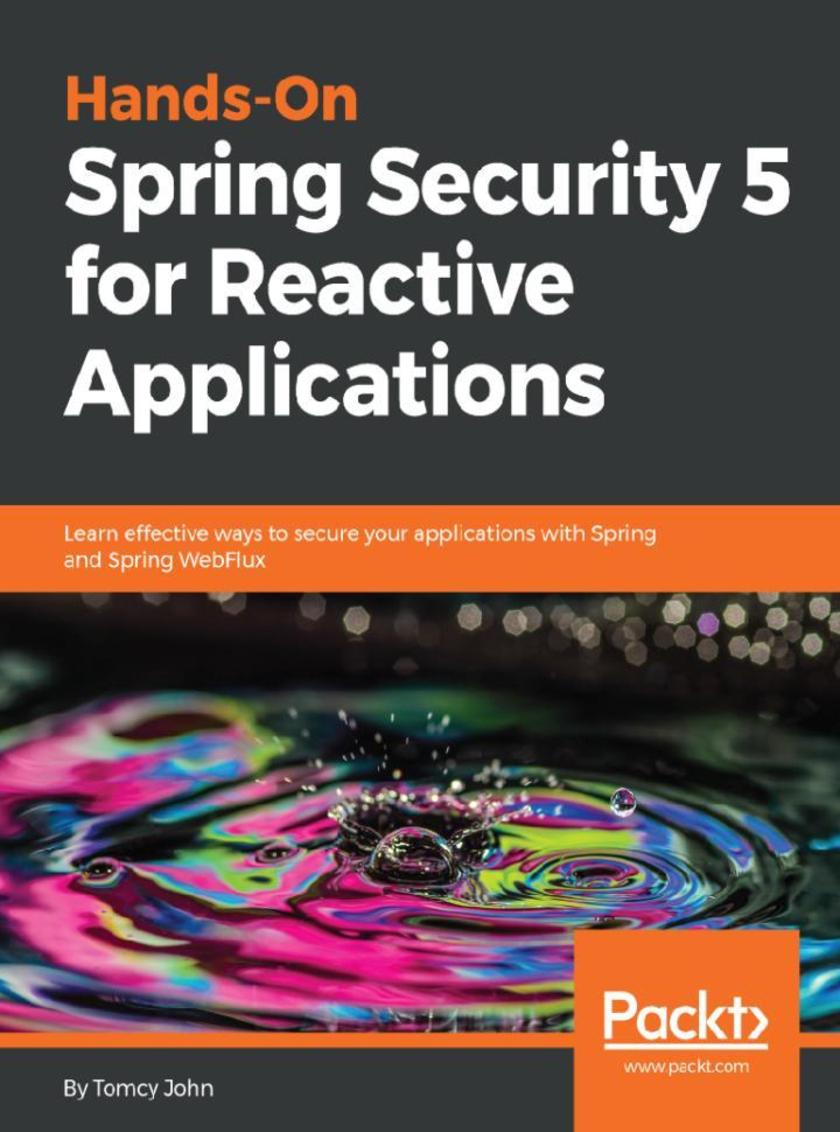
Hands-On Spring Security 5 for Reactive Applications
¥69.75
Learn every step you need for product design and development Key Features *Explore all the tools that you need to be a complete UX designer *Code the product designs you’ve created to become a full-stack designer *Build an amazing portfolio with real-world projects Book Description Designing user experience (UX) is one of the most important aspects of a project, as it has a direct effect on how customers think of your company. The process of designing a user experience is one of the most challenging yet rewarding aspects of product development. Hands-On UX Design for Developers will teach you how to create amazing user experiences for products from scratch. This book starts with helping you understand the importance of a good UX design and the role of a UX designer. It will take you through the different stages of designing a UX and the application of various principles of psychology in UX design. Next, you will learn how to conduct user research and market research, which is crucial to creating a great UX. You will also learn how to create user personas and use it for testing. This book will help you gain the ability to think like a UX designer and understand both sides of product development: design and coding. You will explore the latest tools, such as Sketch, Balsamiq, and Framer.js, to create wireframes and prototypes. The concluding chapters will take you through designing your UI, dealing with big data while designing a UX, and the fundamentals of frontend. Finally, you'll prepare your portfolio and become job ready in the UX arena. What you will learn *What UX is and what a UX designer does *Explore the UX Process and science of making products user-friendly *Create user interfaces and learn which tools to use *Understand how your design works in the real world *Create UI interaction, animation, wireframes, and prototypes *Design a product with users in mind *Develop a personal portfolio and be well-prepared to join the UX world Who this book is for Hands-On UX/UI Design for Developers is for web designers who have knowledge of basic UX design principles.
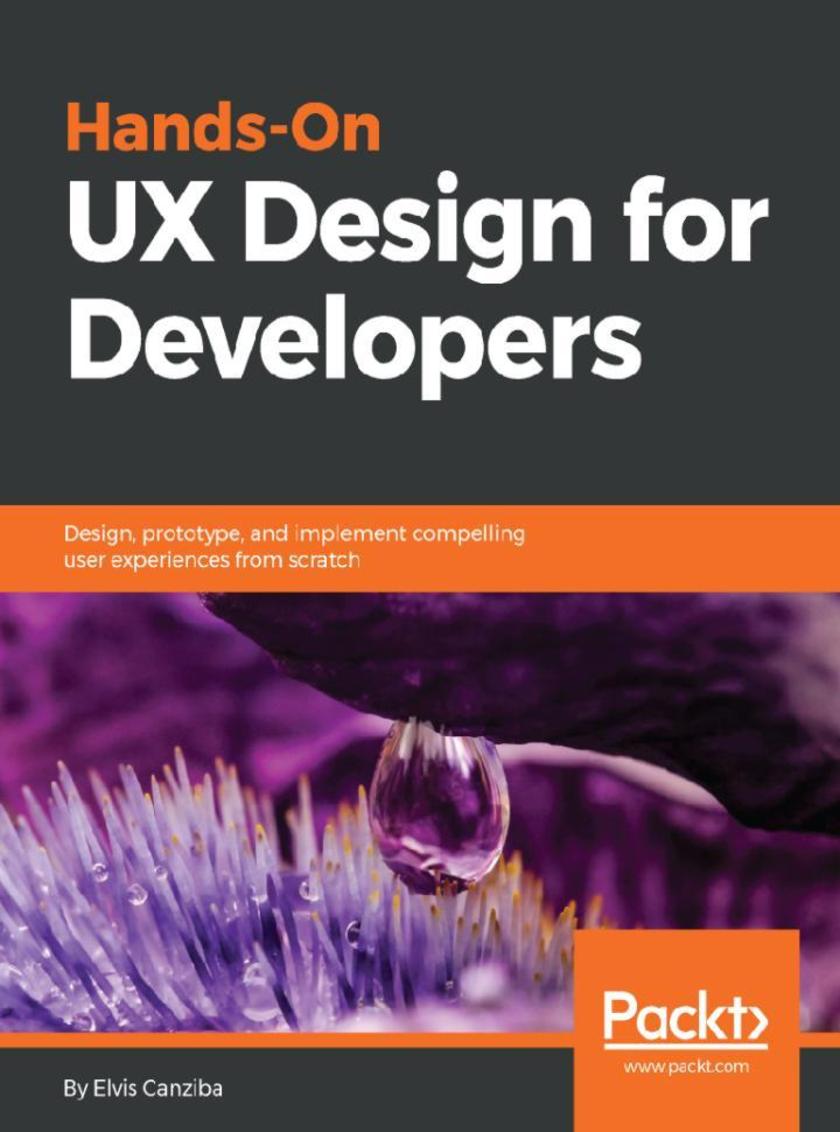
Hands-On UX Design for Developers
¥69.75
Add a touch of data analytics to your healthcare systems and get insightful outcomes Key Features *Perform healthcare analytics with Python and SQL *Build predictive models on real healthcare data with pandas and scikit-learn *Use analytics to improve healthcare performance Book Description In recent years, machine learning technologies and analytics have been widely utilized across the healthcare sector. Healthcare Analytics Made Simple bridges the gap between practising doctors and data scientists. It equips the data scientists’ work with healthcare data and allows them to gain better insight from this data in order to improve healthcare outcomes. This book is a complete overview of machine learning for healthcare analytics, briefly describing the current healthcare landscape, machine learning algorithms, and Python and SQL programming languages. The step-by-step instructions teach you how to obtain real healthcare data and perform descriptive, predictive, and prescriptive analytics using popular Python packages such as pandas and scikit-learn. The latest research results in disease detection and healthcare image analysis are reviewed. By the end of this book, you will understand how to use Python for healthcare data analysis, how to import, collect, clean, and refine data from electronic health record (EHR) surveys, and how to make predictive models with this data through real-world algorithms and code examples. What you will learn *Gain valuable insight into healthcare incentives, finances, and legislation *Discover the connection between machine learning and healthcare processes *Use SQL and Python to analyze data *Measure healthcare quality and provider performance *Identify features and attributes to build successful healthcare models *Build predictive models using real-world healthcare data *Become an expert in predictive modeling with structured clinical data *See what lies ahead for healthcare analytics Who this book is for Healthcare Analytics Made Simple is for you if you are a developer who has a working knowledge of Python or a related programming language, although you are new to healthcare or predictive modeling with healthcare data. Clinicians interested in analytics and healthcare computing will also benefit from this book. This book can also serve as a textbook for students enrolled in an introductory course on machine learning for healthcare.
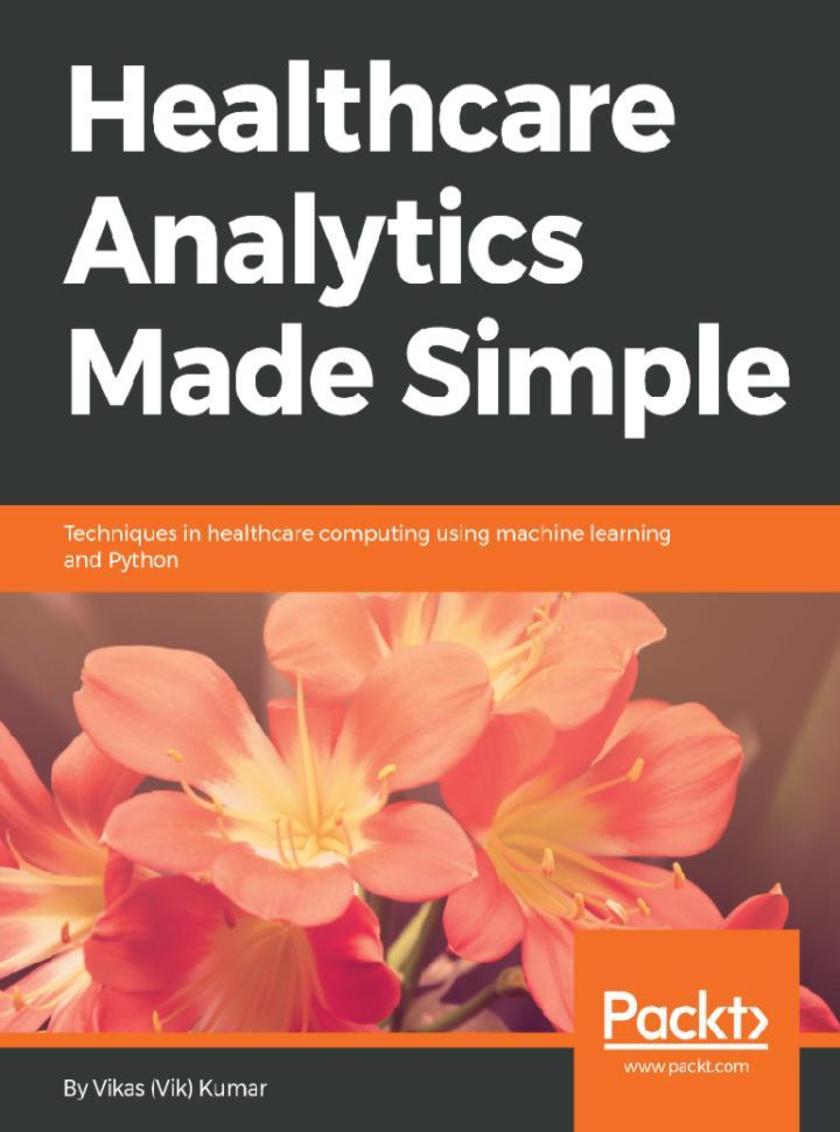
Healthcare Analytics Made Simple
¥69.75
Get up and running with AWS automation using CloudFormation Key Features *Explore the fundamentals of AWS CloudFormation *Get acquainted with concepts such as CloudFormation templates and mappings *Learn to implement Infrastructure as a Code (IaC) on AWS Book Description As the Amazon Web Services (AWS) infrastructure is gradually moving towards cloud, managing cloud-related tasks efficiently continues to be a challenge for system administrators. CloudFormation is a language developed for managing infrastructure-related services efficiently on AWS and its features help secure the AWS resource deployment process. Learn CloudFormation serves as a fundamental guide to kick-start your journey on CloudFormation. We will introduce you to the basic concepts on IaC and the AWS services required for implementing automation and infrastructure management. Then, we deep dive into concepts such as CloudFormation mapping, conditions, limit, and output and EC2. In the concluding chapters, you will manage the entire AWS infrastructure using CloudFormation templates. By the end of this book, you will get up and running with IaC with CloudFormation. What you will learn *Understand AWS CloudFormation *Develop AWS CloudFormation templates *Deploy AWS CloudFormation for AWS resources *Build your first AWS CloudFormation project *Explore AWS Security features *Deploy testing and production stages using CloudFormation Who this book is for Learn CloudFormation is for cloud engineers, system administrators, cloud architects, or any stakeholders working in the field of cloud development or cloud administration. Basic knowledge of AWS is necessary.
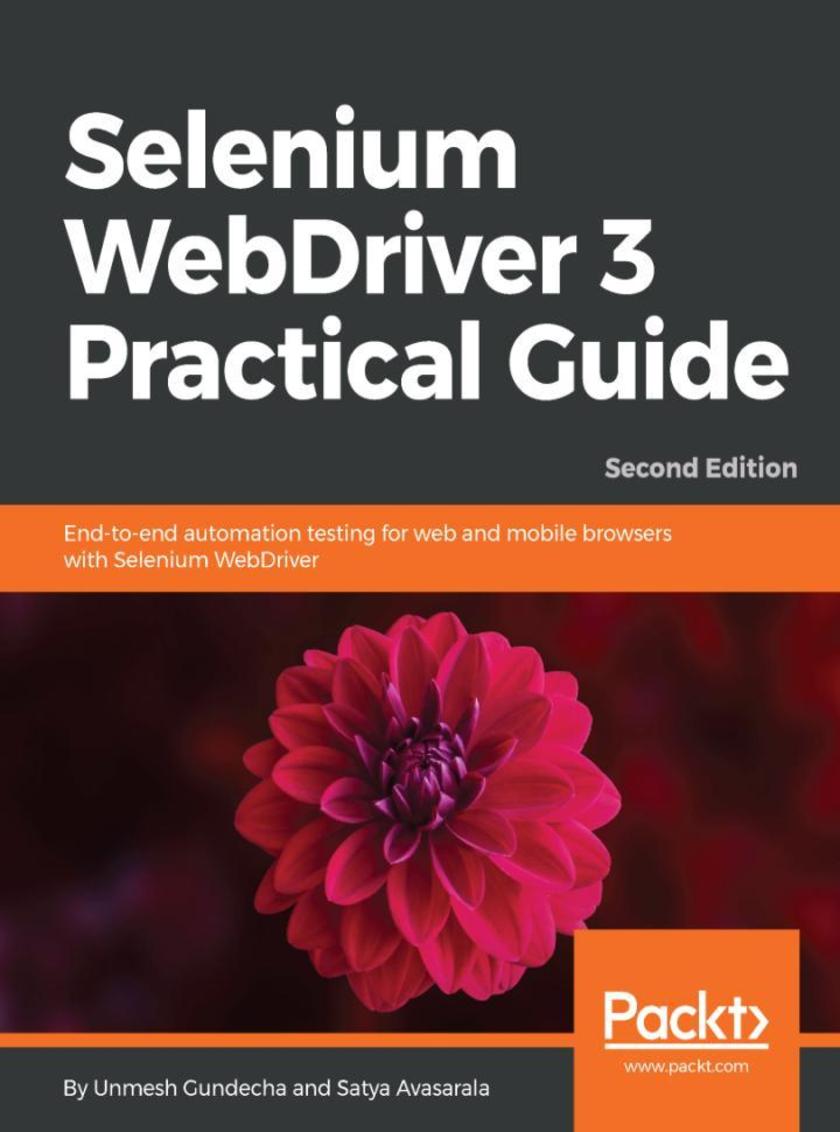
Selenium WebDriver 3 Practical Guide
¥69.75
Bridge the gap between developer and data scientist by creating a modern open-source, Python-based toolset that works with Jupyter Notebook, and PixieDust. Key Features *Think deeply as a developer about your strategy and toolset in data science *Discover the best tools that will suit you as a developer in your data analysis *Accelerate the road to data insight as a programmer using Jupyter Notebook *Deep dive into multiple industry data science use cases Book Description Thoughtful Data Science brings new strategies and a carefully crafted programmer's toolset to work with modern, cutting-edge data analysis. This new approach is designed specifically to give developers more efficiency and power to create cutting-edge data analysis and artificial intelligence insights. Industry expert David Taieb bridges the gap between developers and data scientists by creating a modern open-source, Python-based toolset that works with Jupyter Notebook, and PixieDust. You'll find the right balance of strategic thinking and practical projects throughout this book, with extensive code files and Jupyter projects that you can integrate with your own data analysis. David Taieb introduces four projects designed to connect developers to important industry use cases in data science. The first is an image recognition application with TensorFlow, to meet the growing importance of AI in data analysis. The second analyses social media trends to explore big data issues and natural language processing. The third is a financial portfolio analysis application using time series analysis, pivotal in many data science applications today. The fourth involves applying graph algorithms to solve data problems. Taieb wraps up with a deep look into the future of data science for developers and his views on AI for data science. What you will learn *Bridge the gap between developer and data scientist with a Python-based toolset *Get the most out of Jupyter Notebooks with new productivity-enhancing tools *Explore and visualize data using Jupyter Notebooks and PixieDust *Work with and assess the impact of artificial intelligence in data science *Work with TensorFlow, graphs, natural language processing, and time series *Deep dive into multiple industry data science use cases *Look into the future of data analysis and where to develop your skills Who this book is for This book is for established developers who want to bridge the gap between programmers and data scientists. With the introduction of PixieDust from its creator, the book will also be a great desk companion for the already accomplished Data Scientist. Some fluency in data interpretation and visualization is also assumed since this book addresses data professionals such as business and general data analysts. It will be helpful to have some knowledge of Python, using Python libraries, and some proficiency in web development.
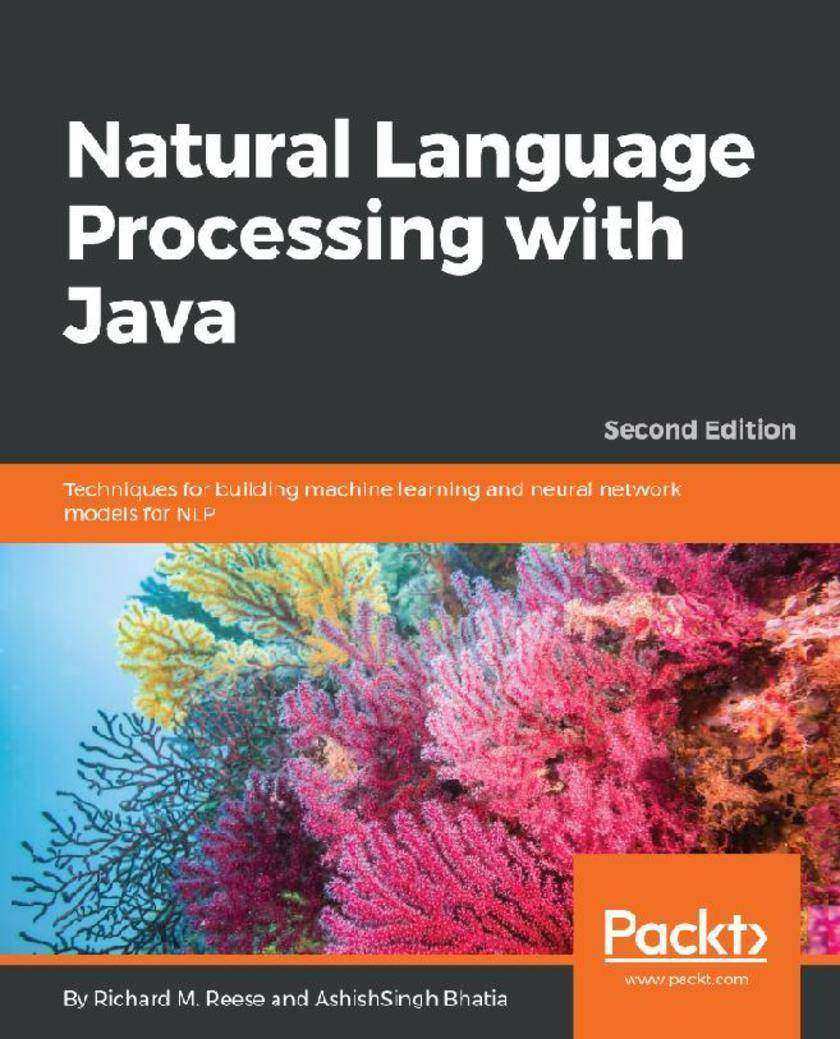
Natural Language Processing with Java
¥69.75
Discover how you can migrate a traditional on-premise SQL server database to a cloud-based solution with Microsoft Azure. Built with database administrators in mind, this book emulates different scenarios you might come across while working with large, complex SQL database migrations and provides solutions for effectively managing the migrated databases. Key Features *Implement backup, restore, and recovery of Azure SQL databases *Create shards and elastic pools to scale Azure SQL databases *Automate common management tasks with PowerShell *Implement over 40 practical activities and exercises across 24 topics to reinforce your learning Book Description As the cloud version of SQL Server, Azure SQL Database differs in key ways when it comes to management, maintenance, and administration. It’s important to know how to administer SQL Database to fully benefit from all of the features and functionality that it provides. This book addresses important aspects of an Azure SQL Database instance such as migration, backup restorations, pricing policies, security, scalability, monitoring, performance optimization, high availability, and disaster recovery. It is a complete guide for database administrators, and ideal for those who are planning to migrate from on premise SQL Server database to an Azure SQL Server database. What you will learn *Learn how to provision a new database or migrate an existing on-premise solution *Understand how to backup, restore, secure, and scale your own Azure SQL Database *Optimize the performance by monitoring and tuning your cloud-based SQL instance *Implement high availability and disaster recovery procedures with SQL Database *Develop a roadmap for your own scalable cloud solution with Azure SQL Database Who this book is for This book is ideal for database administrators, database developers, or application developers who are interested in developing or migrating existing applications with Azure SQL Database. Prior experience of working with an on-premise SQL Server deployment and brief knowledge of PowerShell and C# are recommended prerequisites.
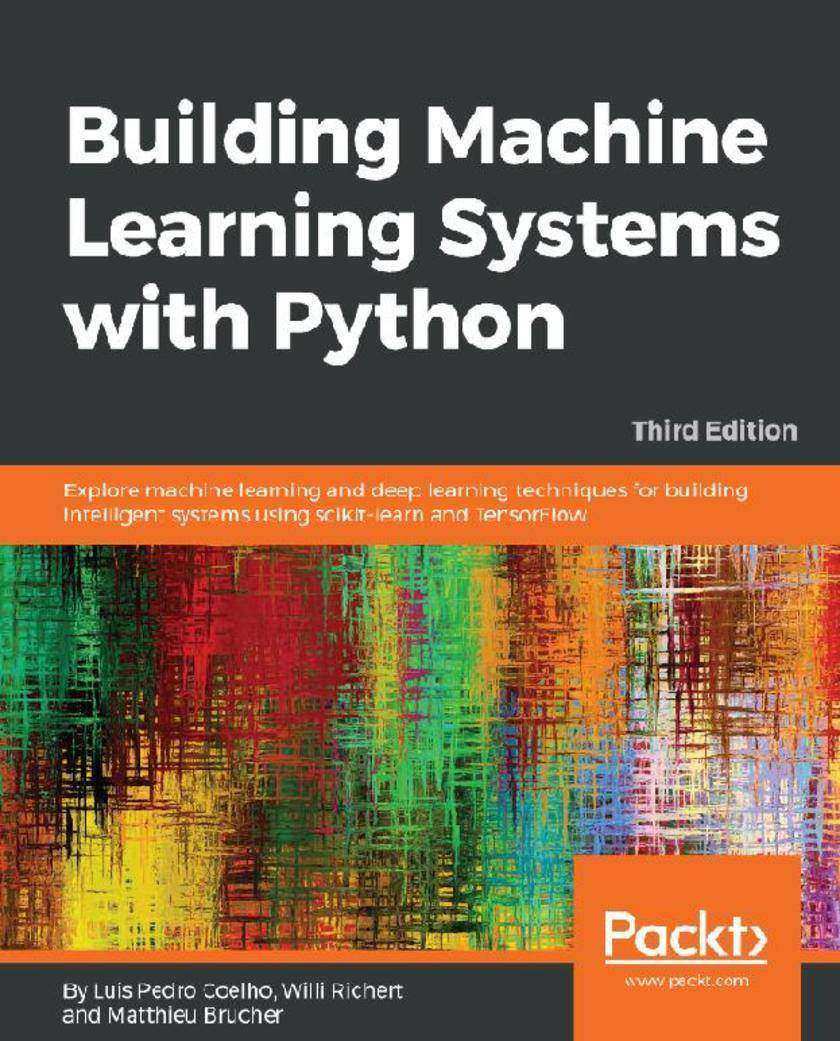
Building Machine Learning Systems with Python
¥69.75
Quickly learn and employ practical recipes for developing real-world, cross-platform applications using Delphi. Key Features *Get to grips with Delphi to build and deploy various cross-platform applications *Design and deploy real-world apps by implementing a single source codebase *Build robust and optimized GUI applications with ease Book Description Delphi is a cross-platform integrated development environment (IDE) that supports rapid application development on different platforms, saving you the pain of wandering amid GUI widget details or having to tackle inter-platform incompatibilities. Delphi Cookbook begins with the basics of Delphi and gets you acquainted with JSON format strings, XSLT transformations, Unicode encodings, and various types of streams. You’ll then move on to more advanced topics such as developing higher-order functions and using enumerators and run-time type information (RTTI). As you make your way through the chapters, you’ll understand Delphi RTL functions, use FireMonkey in a VCL application, and cover topics such as multithreading, using aparallel programming library and deploying Delphi on a server. You’ll take a look at the new feature of WebBroker Apache modules, join the mobile revolution with FireMonkey, and learn to build data-driven mobile user interfaces using the FireDAC database access framework. This book will also show you how to integrate your apps with Internet of Things (IoT). By the end of the book, you will have become proficient in Delphi by exploring its different aspects such as building cross-platforms and mobile applications, designing server-side programs, and integrating these programs with IoT. What you will learn * Develop visually stunning applications using FireMonkey *Deploy LiveBinding effectively with the right object-oriented programming (OOP) approach *Create RESTful web services that run on Linux or Windows *Build mobile apps that read data from a remote server efficiently *Call platform native API on Android and iOS for an unpublished API *Manage software customization by making better use of an extended RTTI *Integrate your application with IOT Who this book is for Delphi Cookbook is for intermediate developers with a basic knowledge of Delphi who want to discover and understand all the development possibilities offered by it.
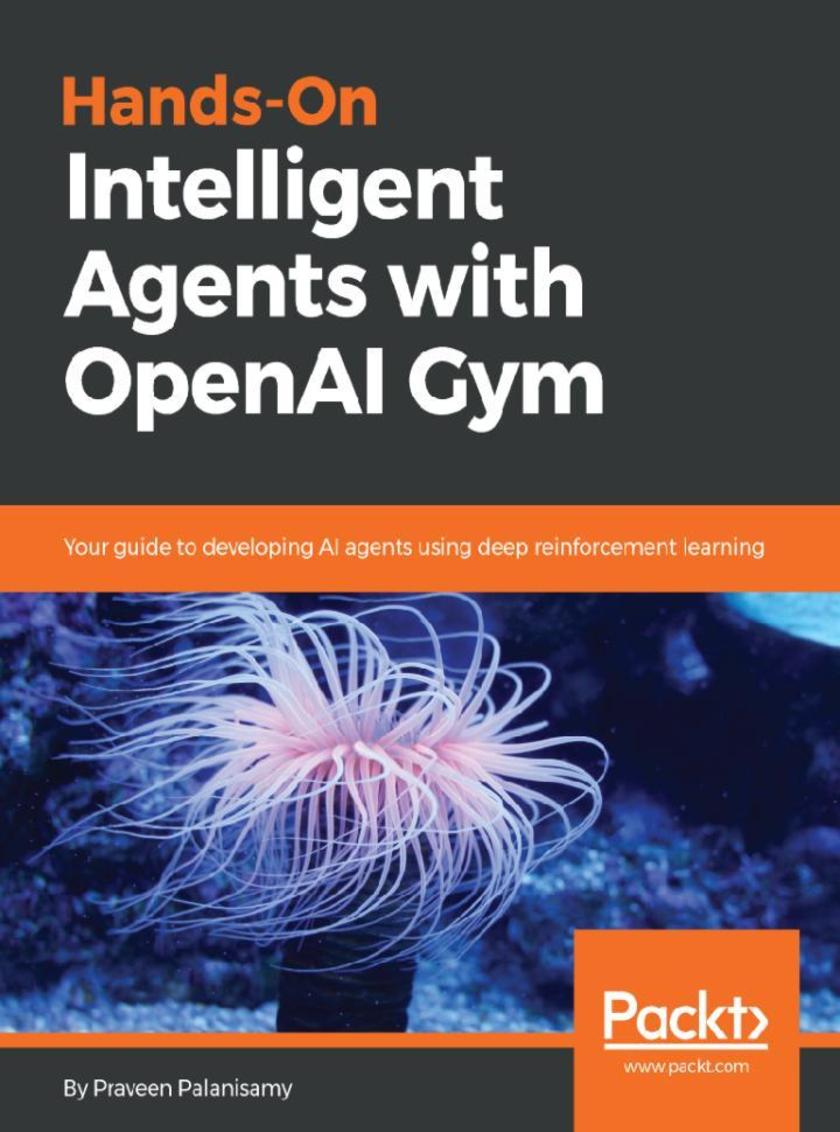
Hands-On Intelligent Agents with OpenAI Gym
¥69.75
With Hands-On Recommendation Systems with Python, learn the tools and techniques required in building various kinds of powerful recommendation systems (collaborative, knowledge and content based) and deploying them to the web Key Features *Build industry-standard recommender systems *Only familiarity with Python is required *No need to wade through complicated machine learning theory to use this book Book Description Recommendation systems are at the heart of almost every internet business today; from Facebook to Net?ix to Amazon. Providing good recommendations, whether it's friends, movies, or groceries, goes a long way in defining user experience and enticing your customers to use your platform. This book shows you how to do just that. You will learn about the different kinds of recommenders used in the industry and see how to build them from scratch using Python. No need to wade through tons of machine learning theory—you'll get started with building and learning about recommenders as quickly as possible.. In this book, you will build an IMDB Top 250 clone, a content-based engine that works on movie metadata. You'll use collaborative filters to make use of customer behavior data, and a Hybrid Recommender that incorporates content based and collaborative filtering techniques? With this book, all you need to get started with building recommendation systems is a familiarity with Python, and by the time you're fnished, you will have a great grasp of how recommenders work and be in a strong position to apply the techniques that you will learn to your own problem domains. What you will learn *Get to grips with the different kinds of recommender systems *Master data-wrangling techniques using the pandas library *Building an IMDB Top 250 Clone *Build a content based engine to recommend movies based on movie metadata *Employ data-mining techniques used in building recommenders *Build industry-standard collaborative filters using powerful algorithms *Building Hybrid Recommenders that incorporate content based and collaborative fltering Who this book is for If you are a Python developer and want to develop applications for social networking, news personalization or smart advertising, this is the book for you. Basic knowledge of machine learning techniques will be helpful, but not mandatory.
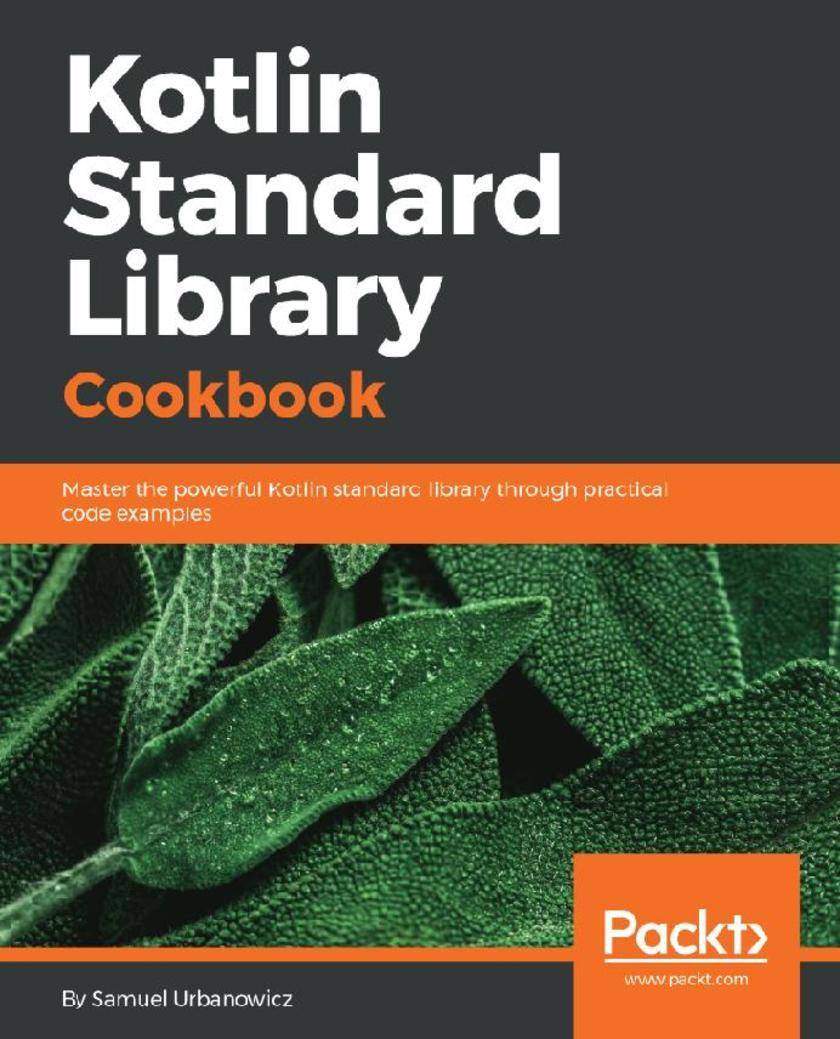
Kotlin Standard Library Cookbook
¥69.75
Gain hands-on experience of installing OpenShift Origin 3.9 in a production configuration and managing applications using the platform you built Key Features *Gain hands-on experience of working with Kubernetes and Docker *Learn how to deploy and manage applications in OpenShift *Get a practical approach to managing applications on a cloud-based platform *Explore multi-site and HA architectures of OpenShift for production Book Description Docker containers transform application delivery technologies to make them faster and more reproducible, and to reduce the amount of time wasted on configuration. Managing Docker containers in the multi-node or multi-datacenter environment is a big challenge, which is why container management platforms are required. OpenShift is a new generation of container management platforms built on top of both Docker and Kubernetes. It brings additional functionality to the table, something that is lacking in Kubernetes. This new functionality significantly helps software development teams to bring software development processes to a whole new level. In this book, we’ll start by explaining the container architecture, Docker, and CRI-O overviews. Then, we'll look at container orchestration and Kubernetes. We’ll cover OpenShift installation, and its basic and advanced components. Moving on, we’ll deep dive into concepts such as deploying application OpenShift. You’ll learn how to set up an end-to-end delivery pipeline while working with applications in OpenShift as a developer or DevOps. Finally, you’ll discover how to properly design OpenShift in production environments. This book gives you hands-on experience of designing, building, and operating OpenShift Origin 3.9, as well as building new applications or migrating existing applications to OpenShift. What you will learn *Understand the core concepts behind containers and container orchestration tools *Understand Docker, Kubernetes, and OpenShift, and their relation to CRI-O *Install and work with Kubernetes and OpenShift *Understand how to work with persistent storage in OpenShift *Understand basic and advanced components of OpenShift, including security and networking *Manage deployment strategies and application’s migration in OpenShift *Understand and design OpenShift high availability Who this book is for The book is for system administrators, DevOps engineers, solutions architects, or any stakeholder who wants to understand the concept and business value of OpenShift.




 购物车
购物车 个人中心
个人中心



